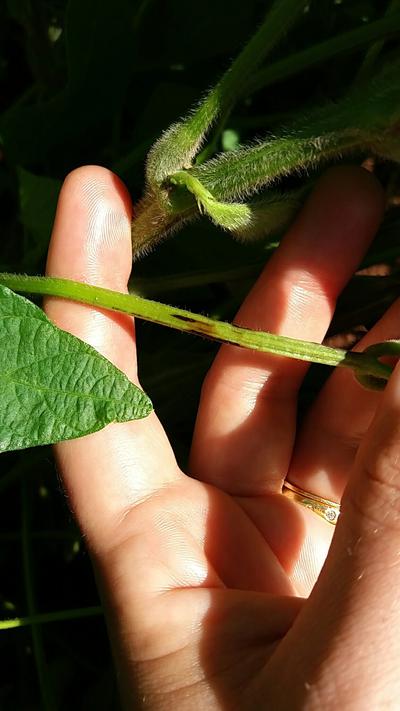Anthracnose of Soybean
Colletotrichum truncatum
Fungus
In a Nutshell
- Brown spots on pods and stems.
- Brown veins.
- Curled leaves.
- Seedling damping-off.
Can also be found in
Symptoms
Anthracnose can infect stems, pods, and leaves of the soybean, often without symptoms. Symptoms may become visible only during the reproductive growth stages. When weather conditions become warm and moist, small dark irregular spots appear on stem and pods. These spots may themselves be covered by small black dots. Leaves might curl and veins turn brown. In severely infected pods small, moldy sterile seeds are produced. Early infection of seedlings can lead to damping-off.
Recommendations

Organic Control
No biological treatment is available against Anthracnose so far.

Chemical Control
Always consider an integrated approach with preventive measures together with biological treatment if available. If more than 5 % of the seeds are infected, a treatment with fungicides is recommended. Chlorothalonil, mancozeb, copper sprays or propiconazole and the systemic fungicide thiophanate-methyl can be used.
What caused it?
The pathogen can survive for over a year on plant material. Spores produced on infested residues are blown by wind and rain onto upper leaves. Infection typically occurs when leaf wetness, rain or dew periods exceed 12 h per day.Overall, the disease may have little effect on the yield, but stands and seed quality can be reduced. In regions with favourable conditions (wet soils, warm and humid weather), yield losses can be high.
Preventive Measures
- Plant high quality certified seeds.
- Consult with retailer if tolerant varieties are available.
- Do not use row distances smaller than 50cm.
- Monitor plants regularly and clean tools and equipments.
- Store seeds at ambient temperature.
- Plow and bury plant residues or simply burn them.
- Rotate with non-host crops to avoid pathogen build-up.



